
Charles Watkin Williams-Wynn PC was a British politician of the early- to mid-19th century. He held office in both Tory and Whig administrations and was Father of the House of Commons between 1847 and 1850.

The Sherwood Rangers Yeomanry (SRY) was a British Yeomanry regiment. In 1967 it was amalgamated with other units to form the Royal Yeomanry (RY), a light cavalry regiment of the Army Reserve. Originally raised as the Nottinghamshire Yeomanry Cavalry in 1794, the regiment was used on several occasions in the 19th century to maintain law and order. During the Second Boer War and both World Wars the regiment earned 44 battle honours. It is now one of the six squadrons of the Royal Yeomanry (RY), a light cavalry regiment of the Army Reserve. Designated as 'A' Squadron, the Sherwood Rangers Yeomanry's current role is to support the Light Cavalry Regiments on operations by providing reconnaissance soldiers.

The Essex Yeomanry was a Reserve unit of the British Army that originated in 1797 as local Yeomanry Cavalry Troops in Essex. Reformed after the experience gained in the Second Boer War, it saw active service as cavalry in World War I and as artillery in World War II. Its lineage is maintained by 36 Signal Squadron, part of 71 (Yeomanry) Signal Regiment, Royal Corps of Signals.
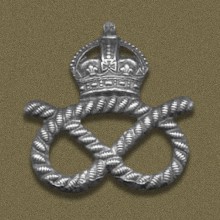
The Staffordshire Yeomanry (Queen's Own Royal Regiment) was a mounted auxiliary unit of the British Army raised in 1794 to defend Great Britain from foreign invasion. It continued in service after the Napoleonic Wars, frequently being called out in support of the civil powers. It first sent units overseas at the time of the Second Boer War and saw distinguished service in Egypt and Palestine in World War I. During World War II it gave up its horses and became a tank regiment, serving in the Western Desert and landing in Normandy on D-Day. Postwar the Staffordshire Yeomanry became part of the Queen's Own Mercian Yeomanry with one of the squadrons being designated 'Staffordshire Yeomanry' until 2021.
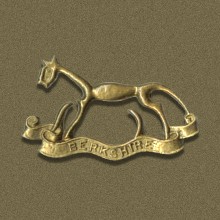
The Berkshire Yeomanry was a part time regiment of the British Army formed in 1794 to counter the threat of invasion during the French Revolutionary Wars. It was the Royal County of Berkshire's senior volunteer unit with over 200 years of voluntary military service. After taking part in the Second Boer War, it saw action as mounted troops in the First World War and as artillery in the Second World War. Its lineage is maintained by 94 Signal Squadron, part of 39 (Skinners) Signal Regiment. The Headquarters of the Squadron is based in Windsor, Berkshire. The Berkshire Yeomanry had a number of battle honours won from Europe to the Far East and Private Frederick Potts was awarded a Victoria Cross for service during the Gallipoli Campaign.

Edward Herbert, 2nd Earl of Powis, KG, styled Viscount Clive between 1804 and 1839, was a British peer and Tory politician. He was the grandson of Clive of India.

The North Somerset Yeomanry was a part-time cavalry regiment of the British Army from 1798 to 1967. It maintained order in Somerset in the days before organised police forces, and supplied volunteers to fight in the Second Boer War. It served on the Western Front in the First World War. At the outbreak of the Second World War, it continued to operate in the mounted role and then as a specialist signals unit. Postwar it joined the Royal Armoured Corps and later became infantry. Its lineage today is maintained by 93 Squadron 39 (Skinners) Signal Regiment.
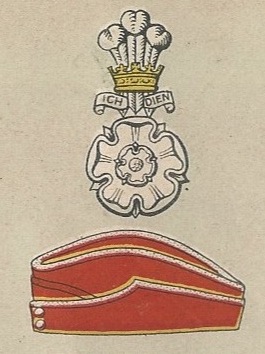
The Yorkshire Hussars was an auxiliary unit of the British Army formed in 1794. The regiment was formed as volunteer cavalry (Yeomanry) in 1794 during the French Revolutionary Wars and served in the Second Boer War and the First World War. It was converted to an armoured role during the Second World War. In 1956, it merged with two other Yorkshire yeomanry regiments to form the Queen's Own Yorkshire Yeomanry. Its lineage is continued today by the Queen's Own Yeomanry.

The Queen's Own Yorkshire Dragoons was a yeomanry regiment of the British Army in existence from 1794 to 1956. It was formed as a volunteer cavalry force in 1794 during the French Revolutionary Wars. Its volunteer companies played an active role with the Imperial Yeomanry in the Second Boer War, but opportunities for mounted action were much more restricted during the First World War and it was temporarily converted into a cycle unit. It remained a cavalry regiment throughout the interwar years, and was the last horsed unit of the British Army to see action, in the Syria–Lebanon Campaign of 1941, finally mechanising the following year. It served as motorised infantry in the North African and Italian campaigns of the Second World War. In 1956, it merged with the Yorkshire Hussars and the East Riding of Yorkshire Yeomanry to form the Queen's Own Yorkshire Yeomanry. Its lineage is continued today by A Squadron, the Queen's Own Yeomanry.
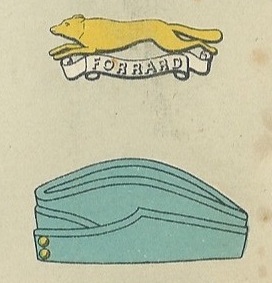
The East Riding of Yorkshire Yeomanry was a unit of the British Army formed in 1902. Units of Yeomanry Cavalry were raised in the East Riding of Yorkshire in the 18th and early 19th centuries at times of national emergency: the Jacobite Rising of 1745, the French Revolutionary Wars and the Napoleonic Wars. These were stood down once each emergency was over. The East Riding of Yorkshire Yeomanry, was established in 1902, and this saw action during the First World War both in the mounted role and as machine gunners.
The Denbighshire Hussars was a Welsh Yeomanry regiment of the British Army formed in 1794. It saw service in the First World War before being converted into a unit of the Royal Artillery. The lineage has been continued by 398 Squadron, Royal Logistic Corps.

The Westmorland and Cumberland Yeomanry was a Yeomanry Cavalry regiment of the British Army with its origins in 1798. The regiment provided troops for the Imperial Yeomanry during the Second Boer War and served on the Western Front in the First World War, latterly as infantry. The regiment converted to artillery in 1920 and served as such in the early years of the Second World War, before becoming part of the Chindits in Burma. Postwar it served as a gunner regiment until 1971 when the title disappeared.
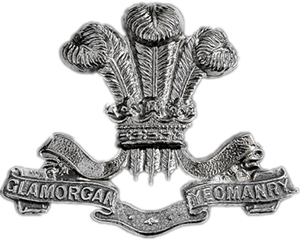
{{Infobox military unit |unit_name=Glamorgan Yeomanry |abbreviation= |image= |caption=Glamorgan Yeomanry cap badge |dates= 1797–1831
1861–1873
1901–present |country = Kingdom of Great Britain (1794–1800)
United Kingdom (1801–Present) |allegiance= |branch= Territorial Army |type=Yeomanry |role= |size= Regiment |command_structure= |equipment= |Past Commanders= |ceremonial_chief= |colonel_of_the_regiment= |notable_commanders=Col Windham Wyndham-Quin |identification_symbol= |identification_symbol_2= |nickname= |patron= |motto= |colors= |march= |mascot= |battles=* Merthyr Rising
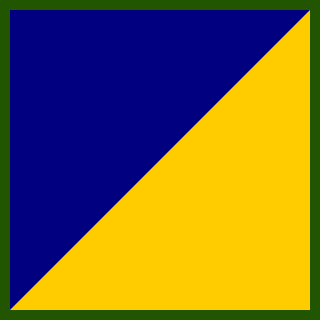
The Pembroke Yeomanry was an auxiliary regiment of the British Army dating back to 1794. It saw active service in the French Revolutionary War, the Second Boer War, World War I and World War II. Its lineage is maintained by 224 Transport Squadron, part of 157 (Welsh) Regiment RLC in the Army Reserve.

The Hertfordshire Yeomanry was a Yeomanry Cavalry regiment of the British Army that could trace its formation to the late 18th century. First seeing mounted service in the Second Boer War and World War I, it subsequently converted to artillery. Three regiments saw service in World War II, one of which was captured at the fall of Singapore. It continued through various postwar amalgamations and its lineage was maintained by 201 Battery, 100th (Yeomanry) Regiment Royal Artillery until that unit was placed in suspended animation in 2014.
The Surrey Yeomanry was a unit of the British Army first formed as volunteer cavalry in 1794. It was reformed in 1901 and saw varied service in the First World War. During the interwar period, it converted to artillery and during the Second World War one of its regiments distinguished itself during the retreat to Dunkirk, saw action during the Second Battle of El Alamein, and also saw service in Sicily and Italy. Its other regiment served in East Africa, the Siege of Tobruk, and in Iraq and Persia. The regiment's lineage is maintained today by 2 Field Troop, 579 Field Squadron (EOD), part of 101 (London) Engineer Regiment (Volunteers).
The Welsh Horse Yeomanry was a yeomanry regiment of the British Army that served in the First World War. The regiment was raised shortly after the outbreak of the war. Initially it served in East Anglia on anti-invasion duties, before being dismounted in 1915 and sent to take part in the Gallipoli Campaign. After withdrawal to Egypt, it was amalgamated with the 1/1st Montgomeryshire Yeomanry as the 25th Battalion, Royal Welch Fusiliers and served as such throughout the rest of the war. It took part in the Sinai and Palestine Campaign in 1917 and 1918, before being transferred to the Western Front where it remained until the end of the war. The regiment formed 2nd and 3rd Lines in 1914, but these never left the United Kingdom before being disbanded in 1916 and early 1917, respectively. The 1st Line was disbanded in 1919.

The British yeomanry during the First World War were part of the British Army reserve Territorial Force. Initially, in 1914, there were fifty-seven regiments and fourteen mounted brigades. Soon after the declaration of war, second and third line regiments were formed. However, the third line regiments were soon absorbed into the Cavalry Reserve Regiments, to supply replacements for the cavalry and yeomanry. Other horsed regiments in the British Army, during the war, were the regular cavalry regiments and the three regiments belonging to the special reserve: the North Irish Horse, the South Irish Horse and the King Edward's Horse. The senior yeomanry regiments could trace their origins back over 100 years; the oldest regiment, the Royal Wiltshire Yeomanry, had been formed in 1794. The most junior regiment, the Welsh Horse, had only been formed on 18 August 1914, after the start of the war.
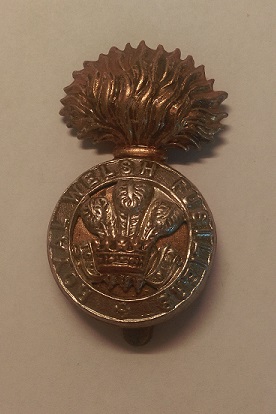
The 7th Battalion, Royal Welch Fusiliers, was a Welsh unit of Britain's Territorial Force. First raised in 1897, it fought at Gallipoli and in Palestine during World War I, and in the campaign in North West Europe during World War II. A duplicate battalion was converted to the paratroop role. Postwar the battalion was converted into anti-aircraft artillery, then reverted to infantry in 1956 after it amalgamated with a neighbouring unit.
The Montgomeryshire Militia, later the Royal Montgomeryshire Rifles, was an auxiliary regiment reorganised in the Welsh county of Montgomeryshire during the 18th Century from earlier precursor units. Primarily intended for home defence, it served in Great Britain and Ireland during Britain's major wars. It later became part of the South Wales Borderers until it was disbanded in 1908.



















